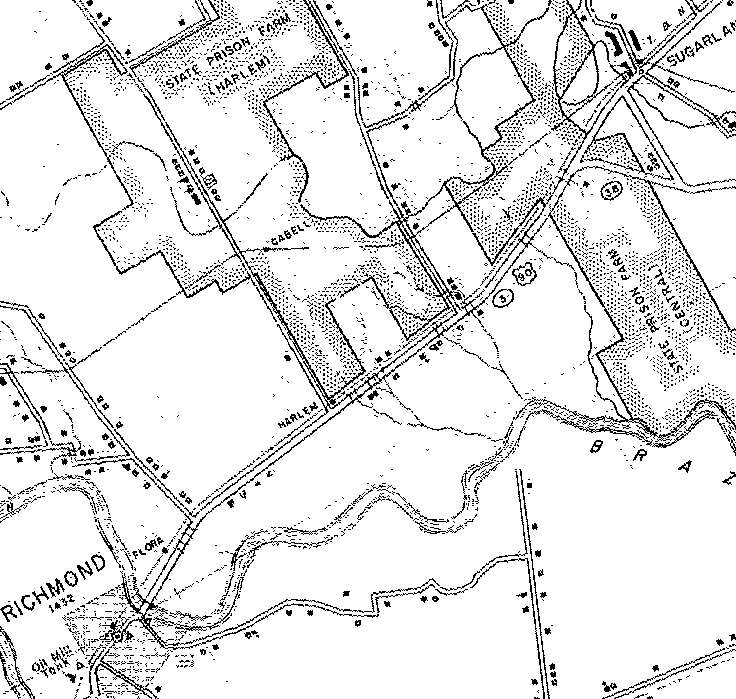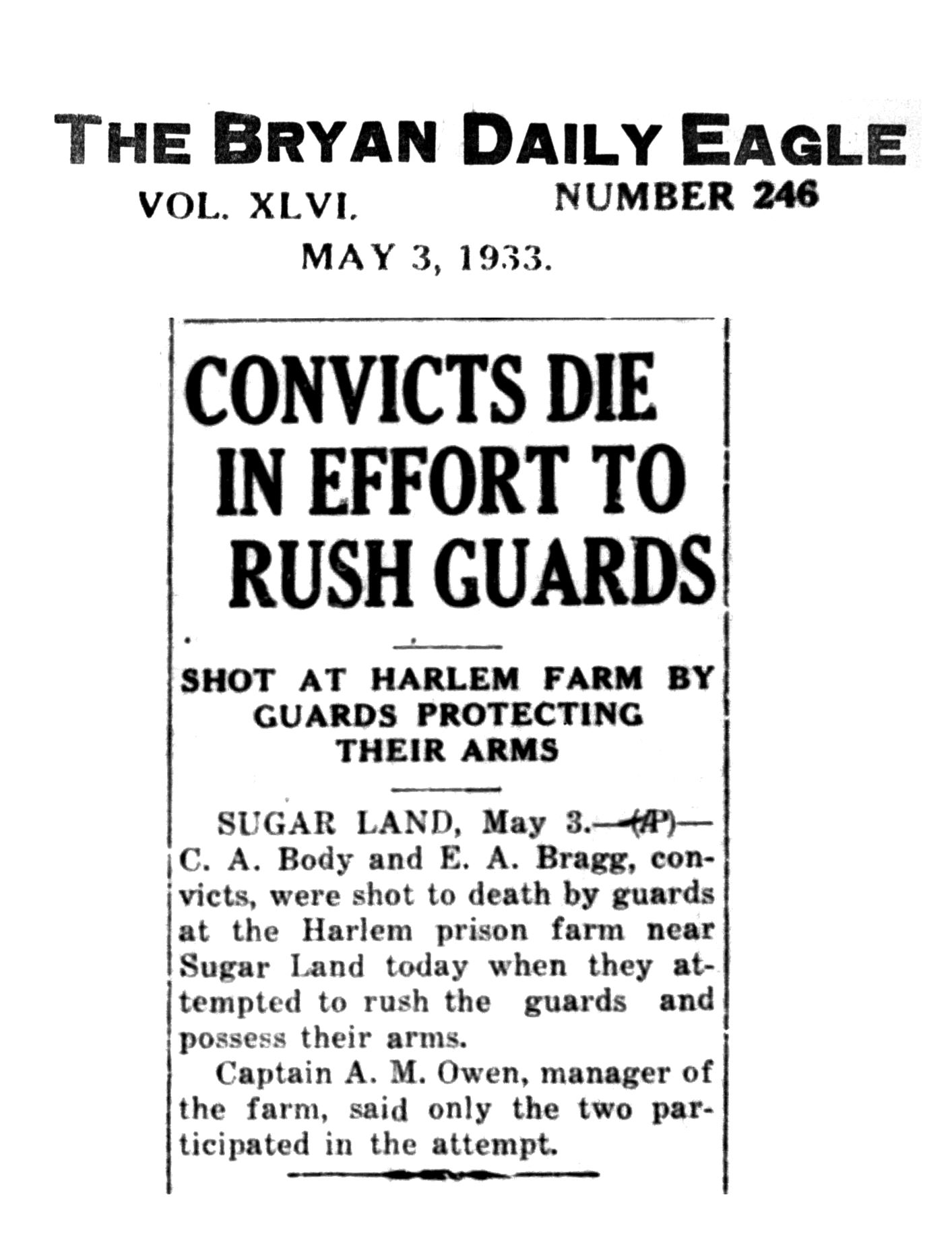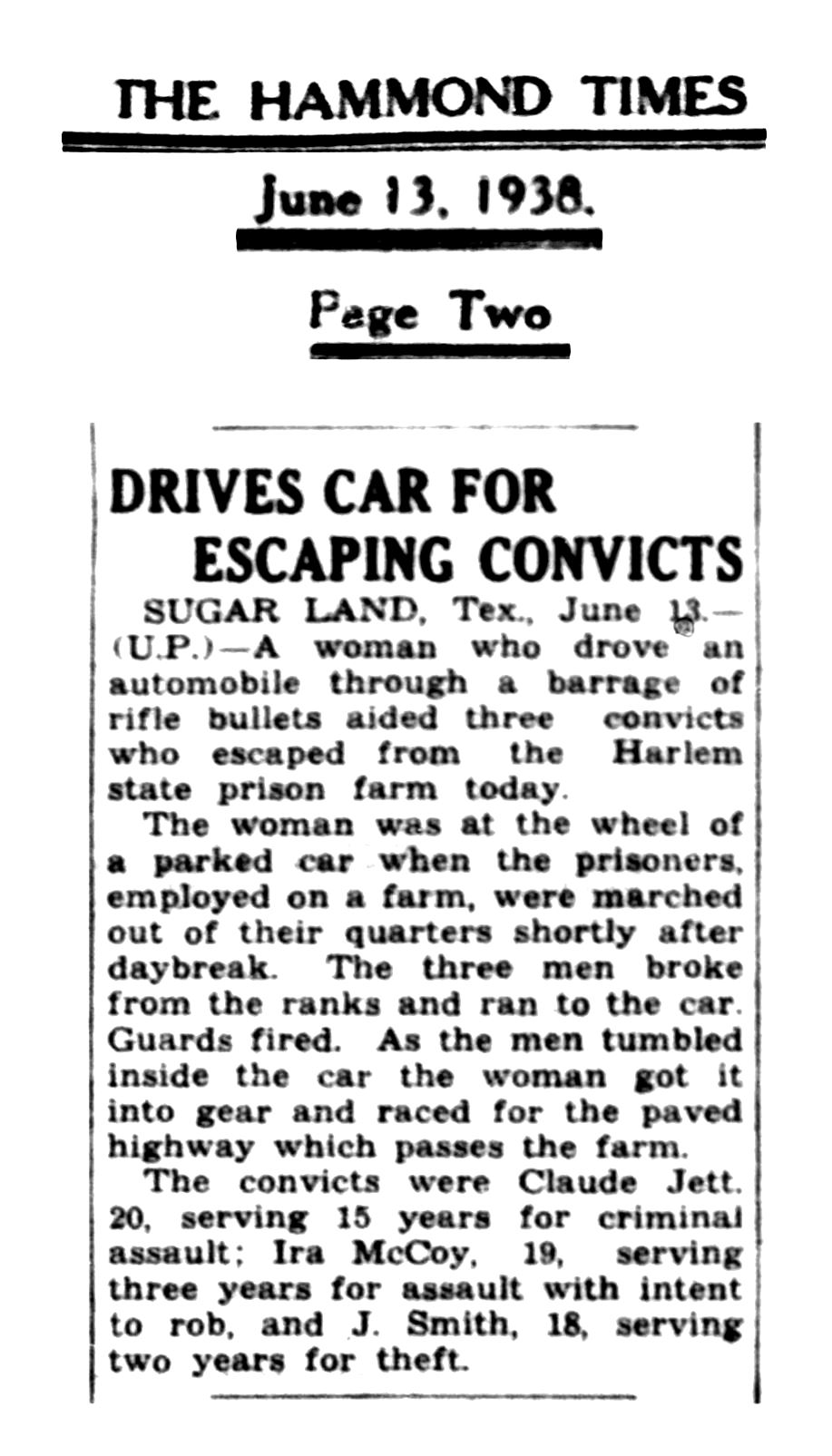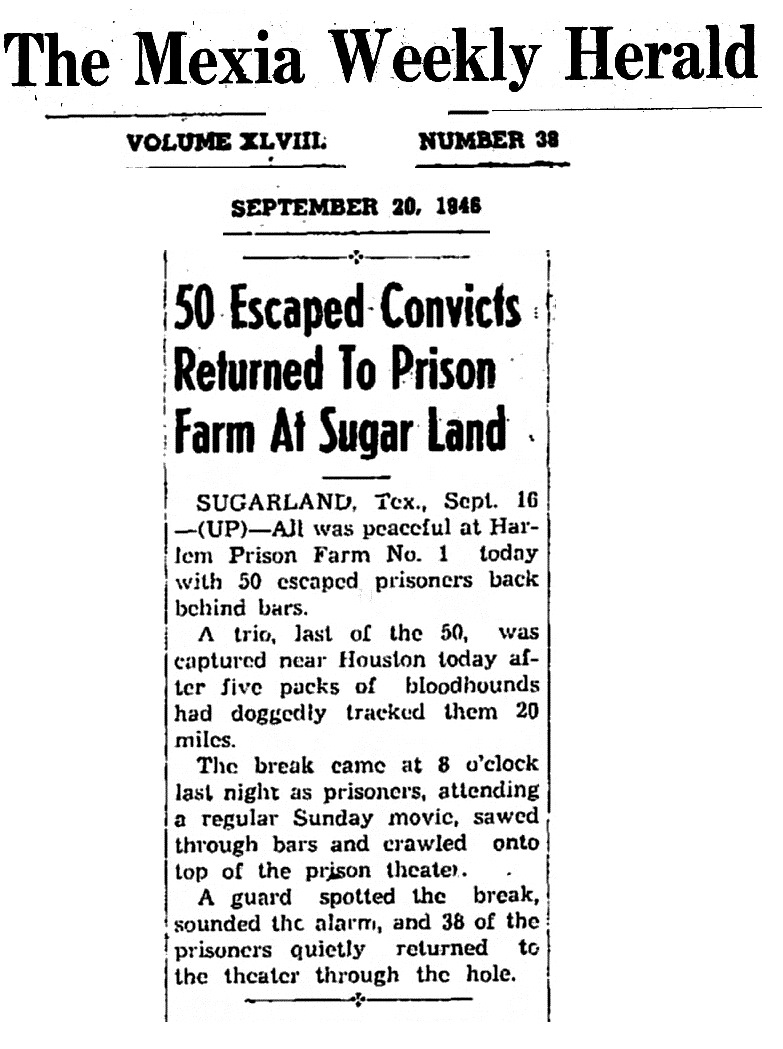
Harlem, Texas
When I checked the deed records, the property was called the Lum Plantation or the Lum farm, after the family that owned it. They sold it to a firm from New York after the Civil War, and when they sold it to the state, it was called Harlem. I could never find out why, and I searched. The best guess I have is that the NY company was located in Harlem. In my MA thesis, in an appendix, I have included the deed searches for the property.
Theresa Jach [Professer at the University of Houston]
theresajach@yahoo.com
JESTER STATE PRISON FARM. Jester State Prison Farm, formerly Harlem Prison Farm, Harlem, or Harlem Plantation, is a farm in Fort Bend County that is owned by the state of Texas and worked by convict labor. The state purchased the property in 1885 or 1886; Harlem was the second prison farm owned and run by the state. Before that time several privately held plantations that used convict labor leased from prisons had been highly successful. R. J. Ransom was placed in charge of the facility and oversaw its operation until his death in December 1895. In a report of 1890 the Penitentiary Board stated that the system was out of debt and that Harlem Plantation was valued at $200,000. The project was so successful that more prison farms were subsequently established.
In September 1913 guards at Harlem State Farm punished twelve black convicts by confining them in the "dark cell," an enclosure nine feet three inches long, seven feet 3? inches wide, and six feet 11? inches high. The inside temperature of the sun-drenched box rose to well over 100 degrees. The confined inmates screamed for help, but the guards later testified that they "had no reason to think there was anything wrong or that any of the convicts were in distress or suffering." Eight of the twelve convicts suffocated. The guards were charged with negligent homicide, but a preliminary investigation found that they had violated no law. A commissioners' investigation suggested that the prison officials had exercised "bad judgment." In 1925 Harlem covered 5,005 acres and housed 260 inmates. Officials established a spur track of the Galveston, Harrisburg and San Antonio Railway to load and transport sugarcane cultivated on the grounds, but the line was abandoned in 1929. In addition to raising cane, prisoners also operated a brick plant. In the 1950s the name of the facility was changed to Jester State Prison Farm, for Governor Beauford H. Jester, and under that name the farm, under the direction of the State Department of Corrections, was still in operation in 1989.
BIBLIOGRAPHY: S. A. McMillan, comp., The Book of Fort Bend County (Richmond, Texas, 1926). Vertical Files, Barker Texas History Center, University of Texas at Austin. (Prisons). Clarence Wharton, Wharton's History of Fort Bend County (San Antonio: Naylor, 1939).
Stephen L. Hardin
HARLEM, TEXAS-POSTMASTERS
Discontinued 31 Aug 1907; mail to Richmond





